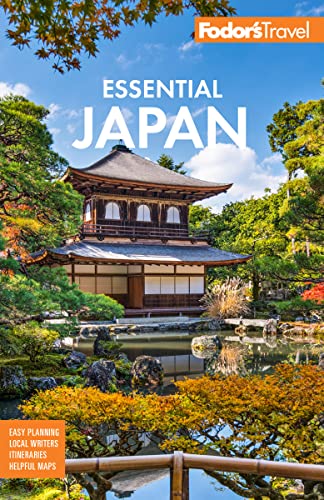Experience Japan
Architecture
The range of climates in Japan and the sweeping social changes over the centuries have left their trace in the country’s architecture. It’s all here, from temple design influenced by trade with China since the eighth century to traditional thatched-roof farmhouses in the Japan Alps to the bold creativity of contemporary projects. If these walls could talk, they’d tell you the entire social history of Japan.
Byodoin Temple, Kyoto. The Phoenix Hall at Byodoin is a beautiful example of 11th-century religious architecture. The temple garden is an attraction in its own right.
Hiroshima Peace Memorial Park, Hiroshima. Kenzo Tange, the father of modern Japanese architecture, took on the mammoth task of presenting wartime atrocity as a memorial to peace.
National Art Center, Tokyo. The glass and concrete curves of this Kisho Kurokawa-designed contemporary art museum marked a new wave in architectural creativity.
Shirakawa-go, Kanazawa. The preserved gassho-zukuri farmhouses in this mountain village testify to the architectural ingenuity required to survive the region’s bitter winters.
Garden Life
Gardens are an obsession in Japan. Many urban homes have a couple of topiary trees, and Buddhist temples nationwide have immaculately maintained grounds. The best Japanese gardens are like the canvasses of master painters, in which nature is ingeniously manipulated and represented in subtly rearranged forms. Some re-create entire landscapes in miniature, and are designed for viewing from one optimal position. Others skillfully integrate immense backdrops of mountains or forest, always managing to add to the innate beauty of the natural environment. Kyoto is home to Zen gardens, minimalist affairs of raked sand, moss, and meaningfully arranged rocks.
Imperial Palace East Garden, Tokyo. An oasis of tree-lined paths, rhododendrons, and water features that provides great views of the Imperial Palace buildings.
Kenrokuen, Kanazawa. Originally landscaped in 1676, 25-acre Kenrokuen looks good all year-round thanks to a wide variety of seasonal plants and trees.
Koinzan Saiho-ji, Kyoto. The so-called Moss Temple has an extraordinary Zen garden, though entry is extremely pricey and requires advance permission.
Suizen-ji Koen, Kumamoto. Part of this garden re-creates the 53 stations of the old Tokaido post road that was immortalized by Hiroshiga Ando in a series of woodblock prints.
Outdoor Adventure
For many people modern Japan conjures images of the concrete, neon-lighted urban jungles of Kanto and Kansai. The country's wealth of natural attractions is easily overlooked, but outdoor enthusiasts will find their every whim catered to. In winter generous snowfall makes Hokkaido and Nagano ideal destinations for skiers and snowboarders. The Japan Alps mountain range that stretches along the north side of Honshu offers excellent hiking trails, and Shikoku is well suited to cyclists. To the south, Okinawa boasts tropical temperatures for much of the year, and its clear waters are excellent for scuba diving and snorkeling.
Kamikochi, Nagano. En route to this small mountain village, you pass though some stunning scenery, and upon arrival a series of trails provides access to the upper reaches of the surrounding peaks.
Manta Scramble, Okinawa. From July to October divers can observe rarely seen manta rays feeding on plankton off the coast of Ishigaki Island.
Niseko, Hokkaido. Australians in the know head here by the tens of thousands each winter for arguably the best skiing in Japan.
Shikoku. The best way to enjoy this picturesque island in the Inland Sea is from the seat of a bicycle. Slow down to the local pace and spend time exploring unexpected diversions.
Holy Sites
Most modern Japanese would not express an affiliation with one religion, but both Shintoism and Buddhism play important roles in many people's lives. Most Shinto architecture, with the notable exception of Nikko's colorful shrines, tends to be simple, like the style of the nation's most sacred site at Ise, emphasizing natural materials such as wood and thatch. Temples run the gamut from austere to gaudy, both in color and design. Kyoto boasts many of the finest examples of religious architecture, while in mountain areas the act of pilgrimage and supplication to the elements is almost as important as the shrines and temples themselves.
Ise Jingu, Mie Prefecture. Home of Shintoism, the national religion, the Grand Shrines of Ise are majestic thatched wooden buildings concealed in expansive forested grounds.
Kiyomizu-dera, Kyoto. The Golden Pavilion of Kinkaku-ji may feature on more postcards, but this temple's large-scale wood construction is stunning. The steep approach to Kiyomizu-dera is lined with hundreds of craft, souvenir, and food shops.
Senso-ji, Asakusa, Tokyo. Probably Tokyo's most important temple, Senso-ji has a tangible Old Tokyo atmosphere from the first entrance gate, with its immense red lantern, through the narrow pedestrian streets to the huge incense burners of the temple.
Todai-ji, Nara. This temple's Daibutsu-den (Hall of the Great Buddha) is the largest wooden building in the world, and houses Japan's biggest Buddha figure, cast in bronze.
Quintessential Dining Experiences
Japan is a nation passionate about food. Some of the offerings can catch you off guard (crab-brain sushi, anyone?) but you won’t find greater dedication to flavor and presentation anywhere else in the world. From Hokkaido crabs to Kyushu horse sashimi, each region has its own much-touted special dishes. Taste first, ask questions later.
Dotonbori River, Osaka. Osakans take eating delightfully seriously; this riverside nightlife district is the place to sample okonomiyaki, takoyaki, and fugu blowfish.
Koya-san, Wakayama. Staying in a temple in this mountain monastery town gives you the chance to try the subtle flavors and textures of shojin ryori, Buddhist vegetarian cuisine.
Tsukiji, Tokyo. The historic area near Ginza is where to go for the freshest sushi breakfast you’ll ever have (and never forget).




